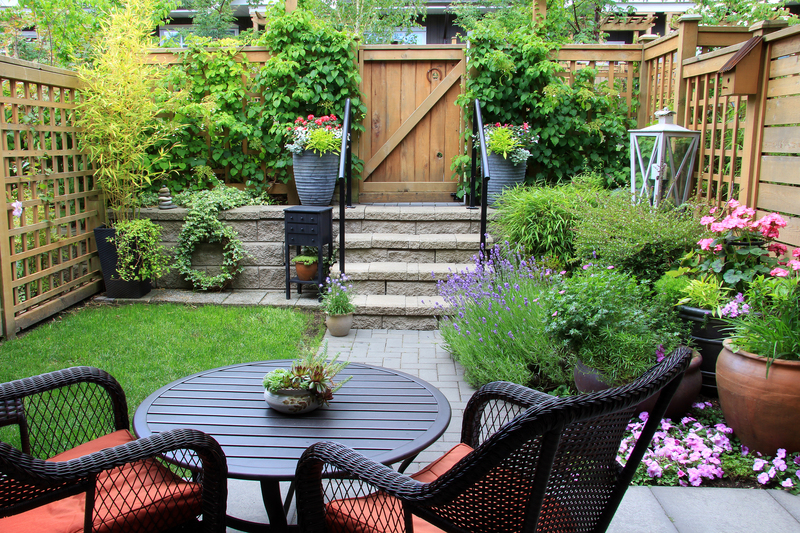27 Easy Vegetable Gardening Ideas and Tips for Beginners
Posted on 18/09/2024

Vegetable gardening is a rewarding and enjoyable activity that can be enjoyed by people of all ages. Whether you are a seasoned gardener or just starting out, these 27 easy vegetable gardening ideas and tips will help you get your garden off to a successful start.
1. Choose the right location.
Pick an area of your yard that gets at least 6 hours of direct sunlight every day and has good soil drainage. Avoid areas prone to standing water or major shifts in temperature.
2. Make sure you have the right tools.
Choose the right tools for the job: trowel, hoe, shovel, rake, wheelbarrow, and gloves are essential pieces of equipment for most backyard gardens.
3. Understand the basic needs of vegetables.
Before you plant, it is important to understand the needs of the vegetables you plan on growing: what kind of soil do they need? How much sun or shade? What is their ideal growing environment? Knowing this information ahead of time will prepare you for success later on.
4. Start small with one to two crops.
If you are new to gardening, it is best to start small with a couple of easy-to-grow crops like tomatoes or beans. This will give you an opportunity to hone your gardening skills before taking on more ambitious projects.
5. Plant in raised beds.
Raised beds improve drainage and act as a barrier against weeds - making them ideal for growing vegetables.
6. Compost your kitchen waste.
Composting transforms kitchen waste into nutrient-rich soil for your garden - providing valuable nutrition for growing vegetables without the use of chemical fertilizers or pesticides.
7. Plant companion plants. Companion plants are plants that grow well together by providing beneficial protection from pests or improved nutrient availability for each other.
8. Use organic fertilizers.
Organic fertilizers like manure and compost provide slow-releasing nutrients that enhance soil structure while also promoting healthy root growth.
9. Practice crop rotation.
Rotating crops every season helps cut back on disease outbreaks as well as keep nutrient levels balanced in your soil.
10. Mulch to conserve moisture and reduce weeds.
Mulching reduces soil erosion, adds beneficial organic matter to the soil, and maintains an even temperature throughout recipes. That doesn't mean you can't try out something more complex - everyone loves hummus - but begin with something simple so that if things don't turn out right (or if it doesn't taste quite as delicious as you thought), it won't be too big of a disappointment!
11. Consider container gardens. Container gardens are perfect for small spaces and provide maximum versatility - allowing you to easily move your plants around as needed.
12. Water early in the morning. It's best to water early in the day so that plants have plenty of time to soak up water before it evaporates in the sun.
13. Protect from pests. There are many pest control methods available -- from physical barriers like fencing to natural deterrents such as companion planting - that can help reduce or eliminate damage caused by insect pests.
14. Practice succession planting. Succession planting is when you plant successive crops over multiple weeks or months - giving you a continuous supply of fresh produce all season long.
15. Start seeds indoors before planting outdoors. Starting your own vegetable seedlings indoors gives them a head start before planting them outside - increasing yield when it comes time to harvest.
16. Make use of vertical space in your garden. Vertical gardening allows you to maximize the amount of usable space in your garden - perfect for places with limited square footage.
17. Fertilize regularly throughout the season. Fertilizing regularly provides vital nutrients to ensure strong growth throughout the planting season.
18. Look forward towards no-till gardening practices. No-till gardening eliminates tilling from your veggie garden routine - reducing erosion and preserving topsoil integrity.
19. Learn about cover cropping techniques. Cover cropping is when different species are planted between rows of vegetables during fallow seasons. Improving soil health during times when no vegetables are being grown.
20. Utilize efficient irrigation systems. Drip irrigation conserves water by delivering precise amounts directly to the roots where it's needed - often eliminating wasted runoff.
21. Pay attention to air circulation. Plants need adequate airflow around them, particularly in hot climates - in order for them to thrive.
21. Add wildlife habitat to your garden. Attract birds, butterflies, frogs, bees, bats and other beneficial wildlife by incorporating natural habitats into your garden.
24. Harvest fruit at peak ripeness. Harvesting fruits at peak ripeness not only guarantees optimal flavour but also prevents over-ripening, which can quickly ruin an entire crop.
25. Preserve surplus harvests. Preserving excess harvests will allow you to store food through winter months while still enjoying fresh produce year-round.
26. Watch out for fungal diseases. Fungal diseases can quickly spread throughout a vegetable patch - leaving them vulnerable if left unchecked. Monitor plants regularly for signs of distress so that any issues can be dealt with before spreading too far.
27. Rotate crops each year. Rotating crops each year helps prevent disease build-up and maximizes productivity. By following these tips and tricks along with doing some proper research beforehand, you can be sure that your vegetable garden is going to be set up perfectly for years of bountiful harvests.


